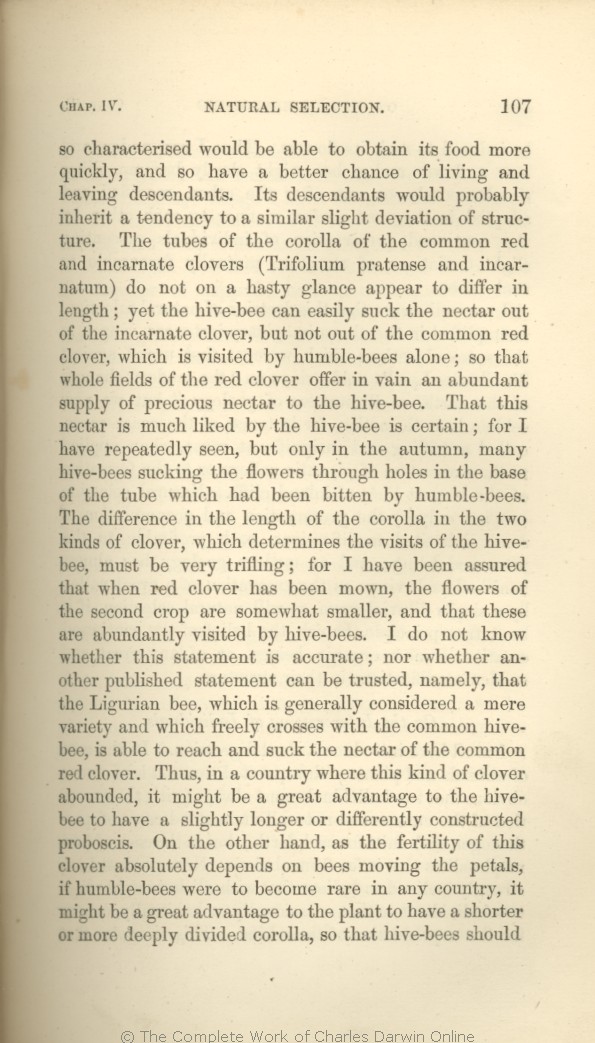that
an | an 1859 1860 1861 1866 | | certain 1869 1872 |
| individual 1859 1860 1861 1866 | | individuals 1869 1872 |
| so characterised 1859 1860 1861 1866 | so characterised 1869 1872 |
| its 1859 1860 1861 1866 | | their 1869 1872 |
| quickly, 1859 1860 1861 1866 | | quickly 1869 1872 |
| and so have a better chance of living and leaving descendants. 1859 1860 1861 1866 |
| than others; and thus the communities to which they belonged would flourish and throw off many swarms inheriting the same peculiarities. 1869 1872 |
| corolla 1866 1869 1872 | | corollas 1859 1860 1861 |
| offer in vain 1859 1860 1861 1866 1872 |
| in vain offer 1869 |
| in 1866 | | bitten in 1869 1872 |
| which had been bitten 1866 |
| OMIT 1869 1872 |
| difference 1866 1869 1872 | | differ- ence 1861 |
| in the two kinds of clover, which 1866 1869 1872 |
| which 1861 |
| hive-bee, 1866 1869 1872 | | hive-bee 1861 |
| assured 1866 1869 1872 | | informed, 1861 |
| ..... 1866 1869 1872 | | the 1861 |
| abundantly 1861 1866 | abundantly 1869 1872 |
| hive-bees. 1861 1866 | | many hive-bees. 1869 1872 |
| and which freely crosses with 1866 1869 |
| of 1872 |
| is 1866 1869 |
| and which freely crosses with it, is 1872 |
| common 1866 1869 | common 1872 |
| moving 1866 | | visiting 1869 1872 |
| petals, 1866 | | flowers, 1869 1872 |
| hive-bees 1866 | | the hive-bees 1869 1872 |
|









